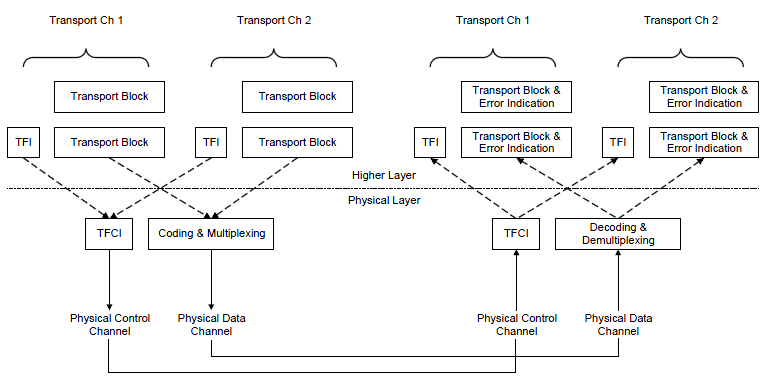|
TFI and TFCI
TFI stands for Transport Format Indicator TFCI stands for Transport Format Combination Indicator. As you see in the following diagram each Transport Block has one TFI attached to it. In physical layer, multiple transport blocks are combined into a large 'transmission frame'. This combined transmission frame is called Coded Composite Transport Channel (CCTrCh). Each CCTrCH frame gets its own indicator which is called TFCI.

TFI plays roles as follows.
- The TFI is a label for a specific transport format within a transport format set.
- It is used in the inter-layer communication between MAC and L1 each time a transport block set is exchanged between the two layers on a transport channel.
- When the DSCH is associated with a DCH, the TFI of the DSCH also indicates the physical channel (i.e. the channelisation code) of the DSCH that has to be listened by a UE
TFCI plays roles as follows.
- This is a representation of the current Transport Format Combination.
- The TFCI is used in order to inform the receiving side of the currently valid Transport Format Combination, and hence how to decode, de-multiplex and deliver the received data on the appropriate Transport Channels.
- There is a one-to-one correspondence between a certain value of the TFCI and a certain Transport Format Combination.
- MAC indicates the TFI to Layer 1 at each delivery of Transport Block Sets on each Transport Channel. Layer 1 then builds the TFCI from the TFIs of all parallel transport channels of the UE, processes the Transport Blocks appropriately and appends the TFCI to the physical control signalling.
- Through the detection of the TFCI the receiving side is able to identify the Transport Format Combination.
|
|
